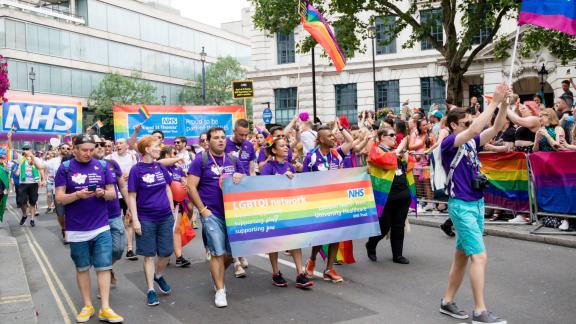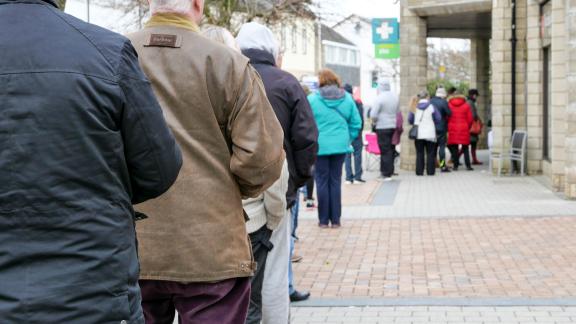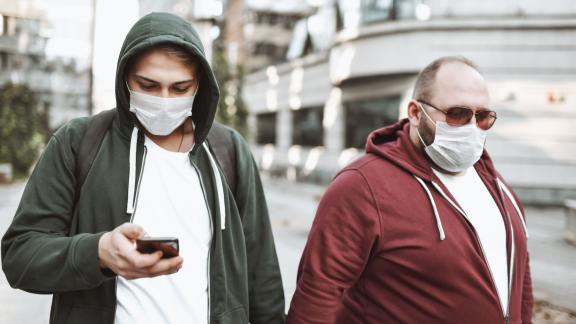The health challenges facing the LGBTQ+ population

COVID-19 has highlighted a unique set of health challenges facing the LGBTQ+ population. In this blog, chair of the Health and Care LGBTQ+ Leaders Network, Peter Molyneux, shares sobering statistics of the impact of the pandemic, and how a new set of recommendations can help employers support and consider the specific needs of the LGBTQ+ population.
There is a wealth of research that highlights the impact that COVID-19 has had on the LGBTQ+ population, which includes increased isolation, prolonged exposure to hostile environments, delayed access to services such as hormone therapy and surgery, increased mental ill health, and rising substance misuse.
Research
A survey by the LGBT Foundation found that 42 per cent of respondents would have liked mental health support during the pandemic, and 25 per cent would have liked access to a befriending service to reduce feelings of isolation.
UK charity Opening Doors found that COVID-19 and the lockdowns had disproportionately increased psychological distress among older LGBT+ people. They felt forgotten, overlooked and that there was a lack of interaction between services and local communities to meet their care and support needs.
A study from the University of Sussex found that 69 per cent of younger people were living in lockdown with families that were unsupportive or hostile, and 90 per cent had experienced homophobia or transphobia.
Of course, these statistics can be applied to LGBTQ+ staff in health and care, who are exhausted from the demands of COVID-19 and must be supported to survive and thrive after the pandemic.
Recommendations
Last November, I took part in a webinar with a panel of healthcare leaders to discuss what is needed for the LGBTQ+ population to recover post COVID-19. From this conversation, came a set of recommendations for the health and care sector to consider when designing and delivering services.
I asked the members of the Health and Care LGBTQ+ Leaders Network to respond to the recommendations. Their response, when added to what we already know about the challenges faced by LGBTQ+ communities, showed that many are facing serious issues and will continue to do so when the pandemic is over.
The recommendations are made up of six steps, which we believe could make a significant difference for staff and service users who are LGBTQ+:
1. Create visible leadership
2. Create a strong knowledge base
3. Be non-heteronormative and non-cisnormative in everything you do
4. Take responsibility for collecting and reporting data
5. Listen to your service users
6. Proactively seek out partners to co-deliver services
Implementation
We know that organisations that have a diverse leadership and inclusive cultures are likely to be more creative and successful. We know when leaders encourage people to voice different opinions, they encourage people to be their authentic selves and this breeds success. We also know that LGBTQ+ staff are less likely than others to believe that their organisation is successful at fostering an inclusive culture.
Our hope is that those who commission, design and deliver healthcare services will share these recommendations with their LGBTQ+ staff networks, HR directors and senior leadership with the ask of a commitment to implementing them. The recommendations can be used to structure discussions around how to ignite meaningful change within organisations, or as a road map for improving community health within local systems.
Recovery
As we emerge from this phase of the pandemic, those of us running health services must ensure that we acknowledge the levels of tiredness that people are experiencing, the grieving that will emerge, and the need to help people recover physically and psychologically.
We need to acknowledge the emotional burden that comes from being members of a minority group and the expectation that in the face of hostility and toxicity, that we will always go 'high' when they go ‘low’. This is something that has become worse in recent months - especially for trans colleagues.
We must use research studies to better understand how the effects of isolation, or transphobia and homophobia, can have and ensure that the needs of the LGBTQ+ community are factored into our plans for recovery.
With recovery rates often lower for LGBTQ+ populations, it is vital that when the time comes for the health sector to start planning its recovery, the needs of the LGBTQ+ population and NHS workforce are considered fully and appropriately.
Next steps
We have identified 11 pilot sites from across the healthcare sector to start implementing these recommendations over the next year. We will follow their progress closely and produce implementation guidance at the end of the pilot period.
If you would like to discuss how your organisation can embed the recommendations to support your LGBTQ+ workforce, you can contact me at LGBTQnetwork@nhsconfed.org
The Health and Care LGBTQ+ Leaders Network is free to join. Find out more here.
Peter Molyneux is chair of the Health and Care LGBTQ+ Leaders Network, chair of Sussex Partnership NHS Foundation Trust, and a member of the Mental Health Network board. Follow him on Twitter @peterjmolyeux and the network @NHSC_LGBTQ



